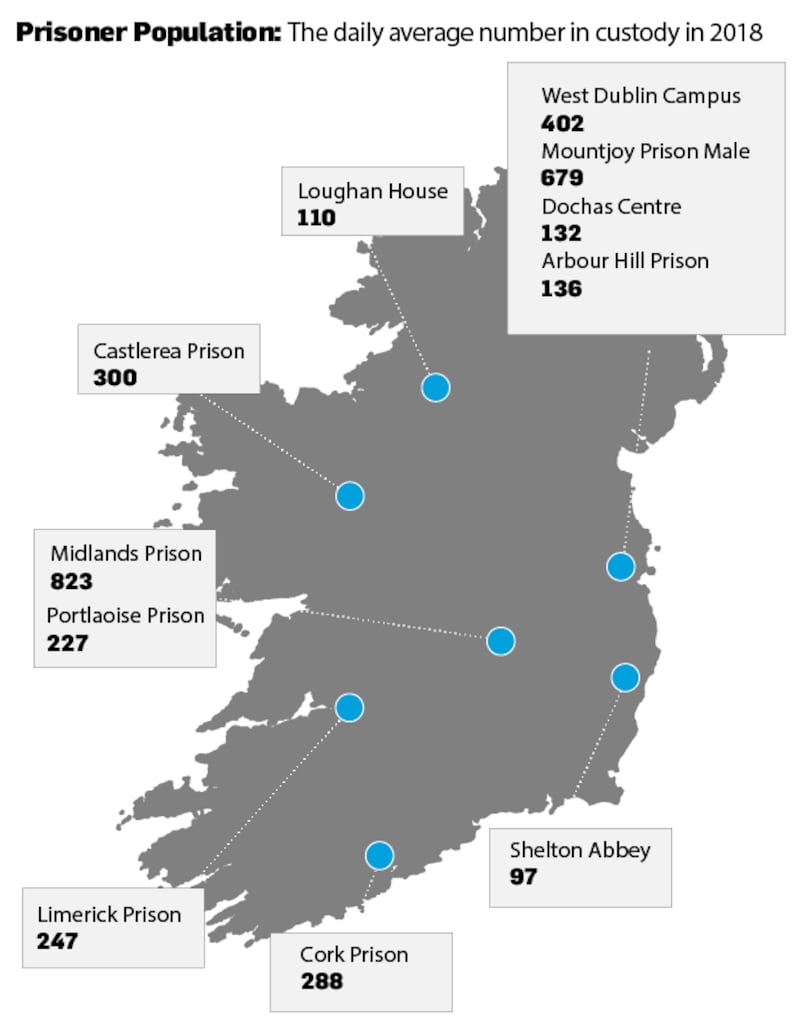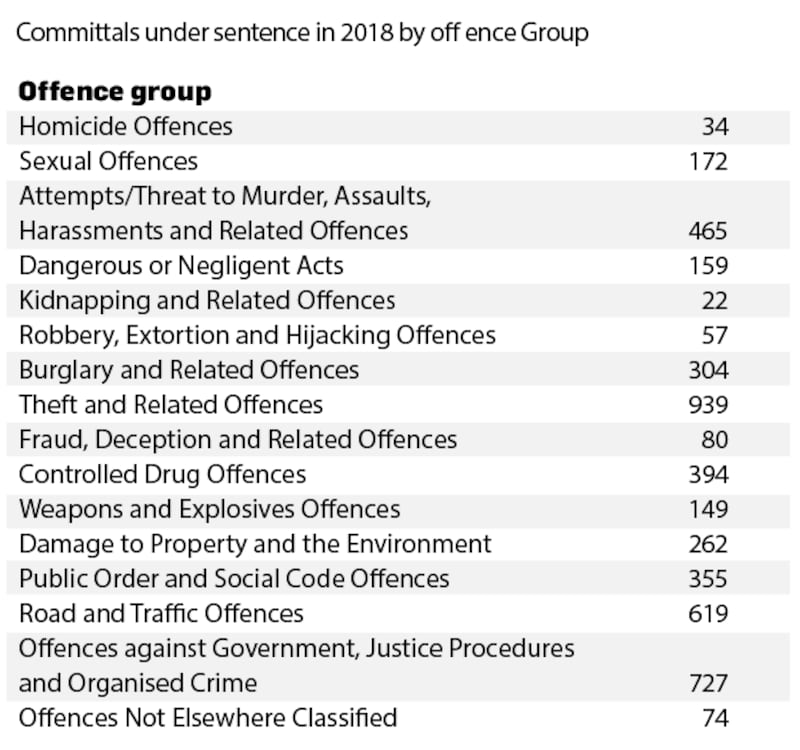Overcrowding is returning to the Irish prison system as the number of people being sentenced to terms of imprisonment by the courts increases and the sentences get longer.
According to the Irish Prison Service annual report published on Sunday, the average number of prisoners in custody daily increased by 8 per cent to 3,911 last year.
Since the start of this year, numbers in custody on any given day have exceeded 4,000 regularly as an increasing number of prisoners serving long sentences are filling more of the prison service’s capacity.
Some 349 prisoners were serving life for homicide; almost all of them convicted murderers. Another 237 were serving defined-term sentences of 10 years or more.

The average cost of jailing a prison for a year was €73,802, up by 7 per cent on €68,535 in 2017; the increase driven by higher staffing costs across the prison system.
There are now concerns the increase in the number of people being sentenced to prisons, and for lengthy terms, is increasing the prisoner population at a time when the prison system was already under pressure in its constant bid to segregate members of rival gangs.
Fine defaulters
Minister for Justice Charlie Flanagan pointed to the fact that committals to prison reduced significantly during last year. Some 455 people were committed to prison for not paying a fine last year compared to 2,261 in 2017, he said.
Mr Flanagan said because so many fine defaulters had been taken out of the prison system, the total number of committals to prison fell from 9,287 in 2017 to 8,071 last year, a decline of just over 13 per cent.
“We must continue to ensure that violent offenders and other serious offenders are committed to prison, while at the same time switching away from prison sentences and towards less costly non-custodial options for non-violent and less serious offenders,” he said.
However, before the Fines Act was enacted, people who were sent to prison for failing to pay a fine were processed into the prison service computer system at a jail and then released, and as such, were phantom prisoners that existed only in official records.
They never entered the prison population proper, meaning their absence now has reduced official records for the number of prison committals but not the daily prison population.
When the impact of the Fines Act is excluded from the committal data, last year there were 4,357 prisoners committed to prison to serve sentences, up by 15 per cent on 2017.

Sentence length
New prison service director general Caron McCaffrey said last year she had seen a “significant” increase in numbers in custody, adding this was now happening quickly.
“There was also a significant increase in the length of sentences in 2018,” she said in the annual report published by the Department of Justice on Sunday.
She was referring to the numbers of prisoners sentenced to between five and 10 years increasing by 10 per cent and those sentenced to 10 years or more increasing by 22 per cent.
Ms McCaffrey took over as director general of the prison service from Michael Donnellan last December and is the first woman to be appointed to the post.
Sources across the criminal justice system believe the number of people being jailed by the courts will continue to increase in the years ahead as sentences also get longer.
Sources point to the number of Garda members increasing to near-record levels, a recovery in the illicit drugs trade after the recession and new gang feuds emerging as key factors that will drive rates of imprisonment and longer sentences.












